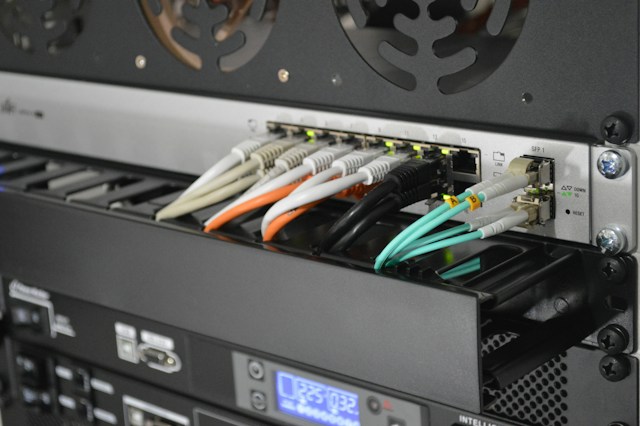In the domain of modern technology, where the demand for seamless connectivity and robust network performance continues to soar, the significance of structured cabling cannot be overstated. Structured cabling forms the backbone of any network infrastructure, providing the framework upon which reliable and efficient communication systems are built; from small-scale offices to sprawling data centers, the implementation of structured cabling plays a pivotal role in enhancing network reliability and performance.
Understanding Structured Cabling
Structured cabling refers to a standardized approach to designing, installing, and managing a comprehensive network cabling solution in 2024. Unlike traditional point-to-point cabling systems that can be cumbersome to manage and prone to inefficiencies, structured cabling employs a hierarchical and organized framework. This framework consists of a series of standardized elements, including cables, connectors, and hardware components, meticulously arranged to facilitate the seamless transmission of data, voice, and multimedia signals. This systematic arrangement enhances efficiency and simplifies troubleshooting and scalability, making structured cabling an essential component of modern network architecture.
Enhanced Reliability
One of the primary benefits of structured cabling is its ability to enhance network reliability; by adhering to industry standards and best practices, structured cabling minimizes the risk of performance bottlenecks, signal interference, and cable failures. The use of high-quality components and meticulous installation techniques guarantees the network operates consistently at optimal levels, thus reducing downtime and mitigating the potential for costly disruptions. Furthermore, structured cabling provides scalability, allowing organizations to easily expand their network infrastructure as their needs evolve. With a well-designed structured cabling system in place, businesses can seamlessly integrate new devices, applications, and technologies without compromising reliability or performance.
Optimized Performance
In addition to bolstering reliability, structured cabling is instrumental in optimizing network performance. By minimizing signal degradation and electromagnetic interference, structured cabling maintains signal integrity and consistency across the network; this translates to faster data transmission speeds, lower latency, and improved overall performance. Moreover, structured cabling enables efficient cable management, reducing clutter and minimizing the risk of accidental damage or disconnection. Ultimately, properly organized cables enhance the aesthetics of the network environment and facilitate easier troubleshooting and maintenance tasks, further contributing to improved performance and operational efficiency.
Future-Proofing Infrastructure
Another key advantage of structured cabling is its inherent adaptability and future-proofing capabilities; as technology continues to advance at a rapid pace, organizations must ensure their network infrastructure can accommodate emerging trends and evolving requirements. Structured cabling provides the flexibility to support various networking technologies, including Ethernet, fiber optics, and wireless solutions without the need for extensive overhauls or costly retrofits. By investing in a robust structured cabling infrastructure, businesses can future-proof their network environment, positioning themselves for long-term success in an ever-changing digital landscape. Whether accommodating bandwidth-intensive applications, implementing IoT devices, or transitioning to cloud-based services, a well-designed structured cabling system lays the foundation for seamless integration and scalability.
Cost-Effectiveness
Despite the initial investment required for implementation, structured cabling offers significant long-term cost savings: by reducing downtime, minimizing maintenance costs and optimizing energy efficiency, structured cabling helps organizations maximize their return on investment (ROI) over time. Additionally, the scalability and adaptability of structured cabling minimize the need for costly upgrades or replacements, further lowering total ownership costs throughout the lifecycle of the infrastructure. Moreover, its streamlined design reduces the likelihood of future expenditures associated with troubleshooting and reconfiguration; this makes structured cabling a strategic investment for businesses aiming to achieve financial efficiency and sustainability in their network infrastructure.
Conclusion
In conclusion, structured cabling serves as the cornerstone of modern network infrastructure, providing the stability, performance, and flexibility required to meet the demands of today’s digital landscape. By prioritizing reliability, optimizing performance, and future-proofing infrastructure, structured cabling enables organizations to build a solid foundation for sustained success. As technology continues to evolve, the importance of structured cabling in enhancing network reliability and performance remains paramount, making it an indispensable component of any forward-thinking organization’s IT strategy.







